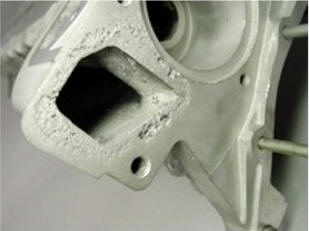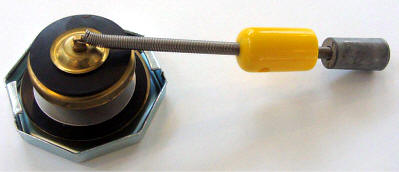Explanation of Electrolysis
One failure mode associated with dirty coolant is known as electrolysis. Electrolysis occurs when stray negatively charged ions (electrical current) routes itself through the engine coolant. The electricity is attempting to find the shortest path, and impurities in the coolant often generate a path of least resistance that the electricity travels across. The source of this stray electricity is often from electrical engine accessories which have not been properly grounded. A missing engine or transmission ground strap can also cause the coolant to become electrified. Sometimes the path of least resistance becomes a radiator, a heater hose, or even the heater core. These components are often well grounded, and offer a ground path from the engine to the chassis by means of the semi-conductive path of the coolant.

Adding an Anode Radiator Cap to the cooling system diminishes this erosion immensely by providing positively charged ions to attract the negatively charged ions present in the coolant. The anode is softer than the aluminum resulting in erosion of the anode instead of the aluminum parts and passages of the engine. The process works somewhat like electrical discharge machines (EDM). These machines work by passing a large electrical current through metal, literally zapping away bits of material until nothing remains. Unfortunately, the electrolysis process works in a similar way, zapping bits of metal in proportion to the amount of electrical current passing through the coolant.
This is where the Anode Radiator Cap comes in to help!


